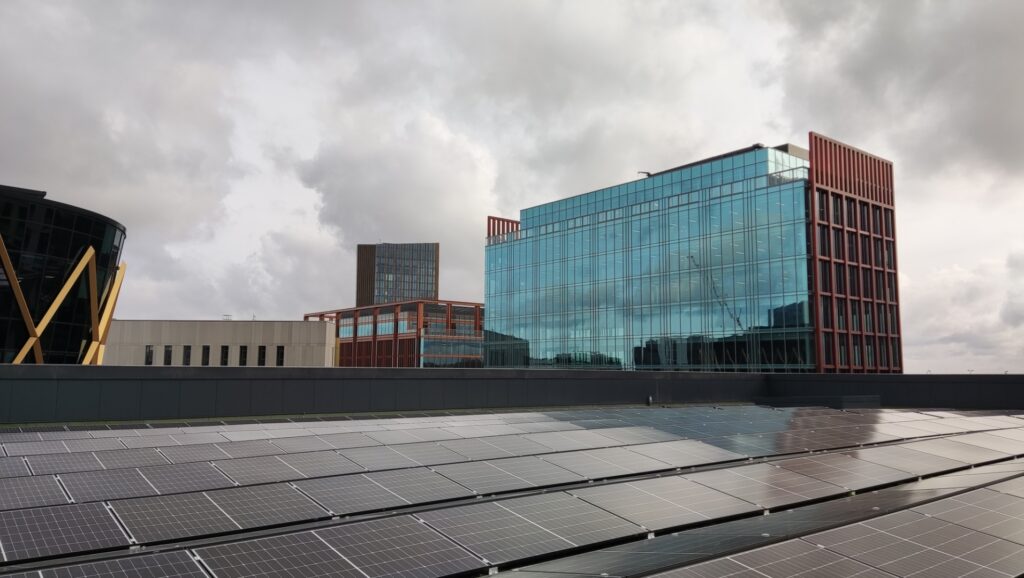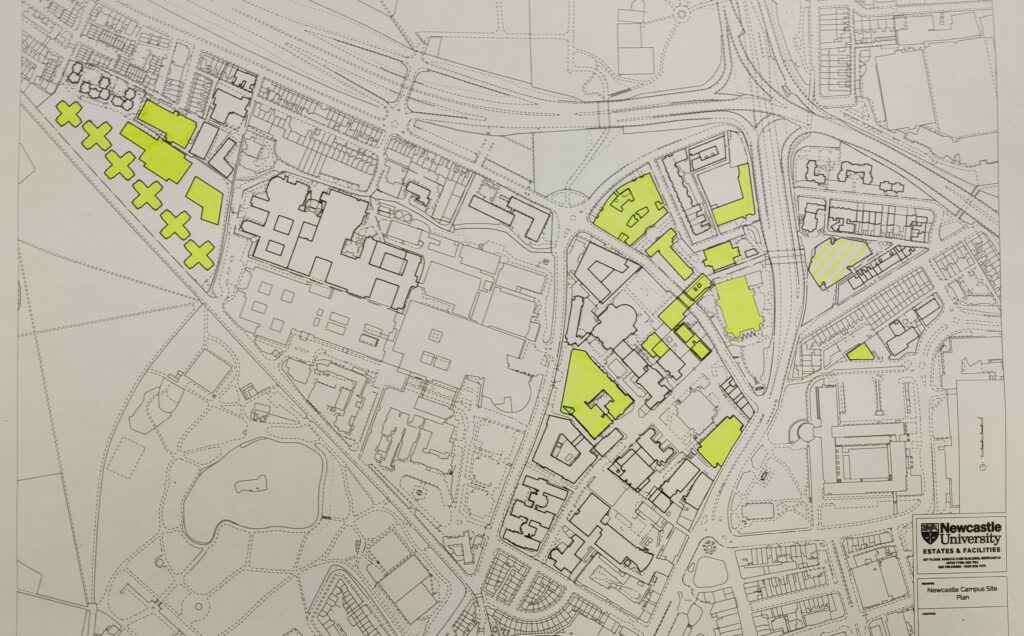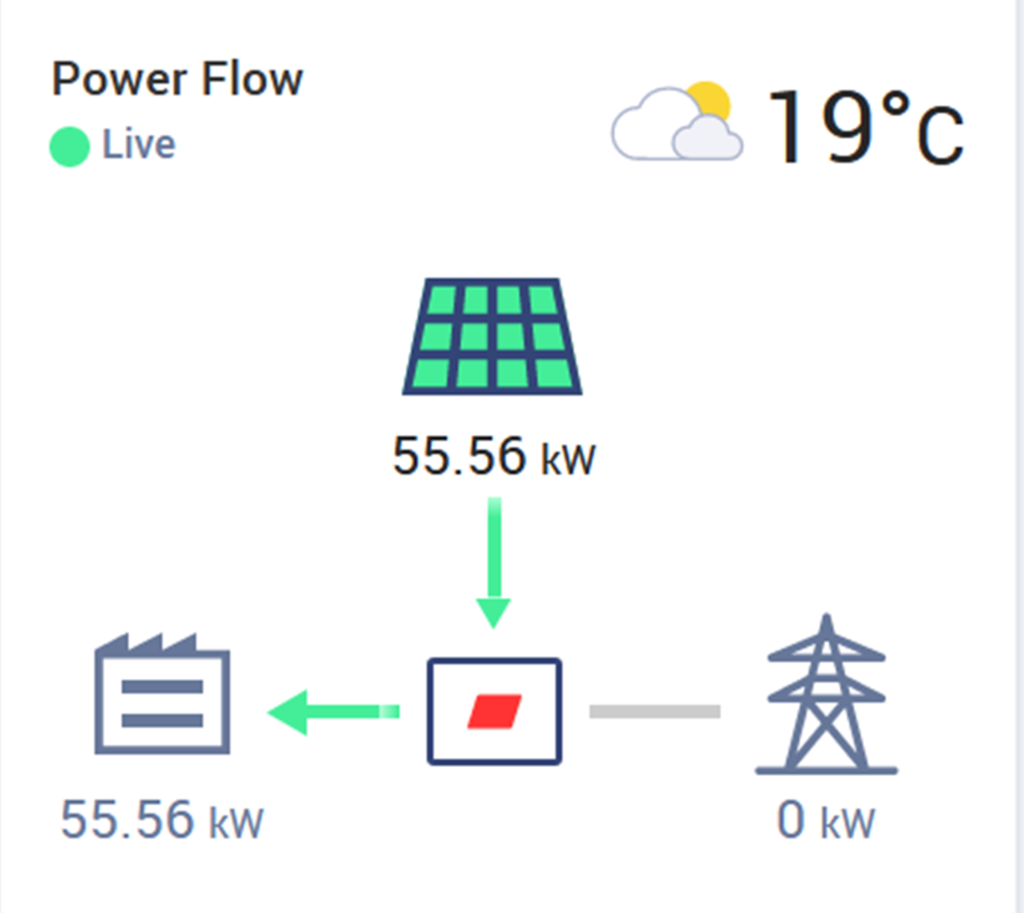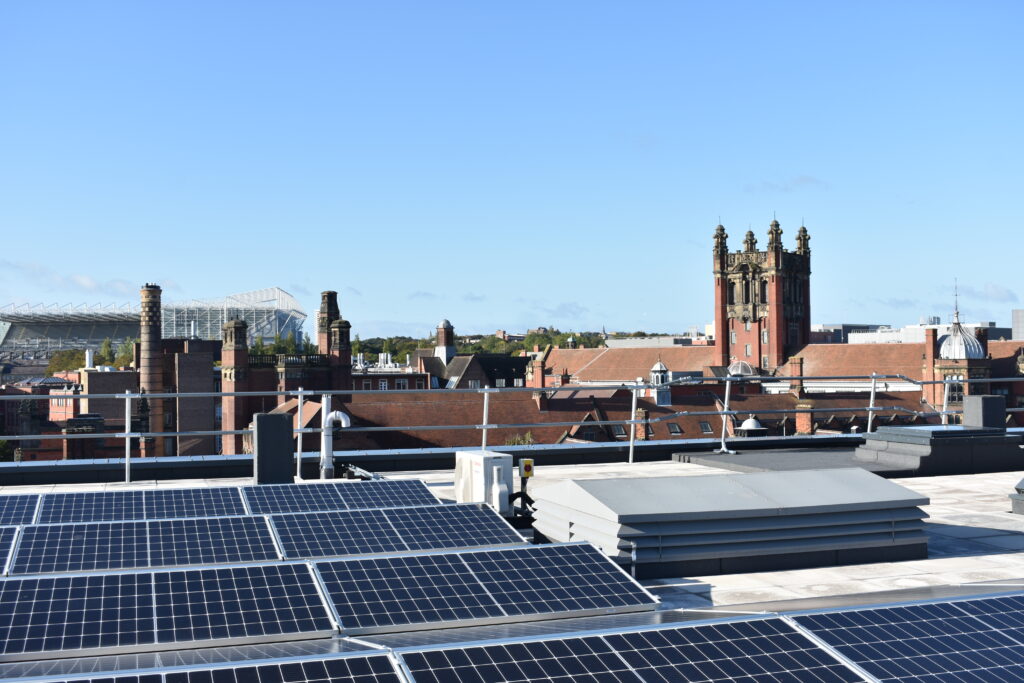As a world-leading institution, Newcastle University has always recognised its responsibility to protect the natural environment – whether through large-scale sustainability initiatives like the Climate Action Plan, or through trailblazing research on marine biomes, extreme weather, and more…
The Sustainability Team at Newcastle University was launched in 2006, and the team’s remit has grown ever since! There are now eight key themes that their work focuses on, including waste, travel, biodiversity and carbon. Their work ranges from large-scale infrastructure projects, to engaging colleagues and students through events and certifications.
Read on to find out about some of the major developments facilitating decarbonisation on campus, ran by the Sustainability Team in collaboration with colleagues in Estates & Facilities and across the University.
Declaring a Climate Emergency
Newcastle University declared a climate emergency in 2019, becoming the second UK university to do so. This declaration was influenced by increasing public discourse on climate change, spurred by activist movements such as Fridays for Future and the work of Greta Thunberg.
By 2021, in response to mounting scientific research and national policy developments – such as the UK government’s legally binding net-zero target for 2050 – the University accelerated its own carbon reduction target from 2040 to 2030. A key step towards this commitment also included full divestment of endowment funds from fossil fuel industries.

Image: Drone shot of the Urban Sciences Building, one of many buildings with solar panels and a green roof over its Atrium. Source: Matt Horne.
Climate Action Plan and Net-Zero Target
The University’s net-zero target includes both our direct emissions from on-campus sources like gas boilers and fleet vehicles (known as Scope 1 emissions) and indirect emissions from purchased energy such as electricity and steam (Scope 2 emissions).
Scope 3 emissions, which encompass travel and procurement, are currently excluded from the 2030 target because of less robust methodologies and reporting. Nevertheless, efforts to address Scope 3 are ongoing, including engaging with supply chains and conducting travel surveys.
The Climate Action Plan outlines key strategies, including reducing energy consumption, increasing renewable energy generation and transitioning away from fossil fuels.
Solar Photovoltaics on Campus
In 2023, Phase 1 of the University Solar Photovoltaics (PV) project began. As a city-centre campus, we have limited space for solar panels. Rooftop installations provide an ideal solution, maximizing sunlight exposure without taking up valuable ground space.
Phase 1 concluded in 2024, with the installation of panels on the Cochrane Park Sports Pavilion, the fourteenth building to support solar PV. Other buildings covered by Phase 1 included:
- Frederick Douglas Centre
- Urban Sciences Building
- The Catalyst
- Park View Student Village (6 buildings)
- Sports Centre (2 buildings)
- Philip Robinson Library
- Henry Daysh Building
Over a period of less than two years, the panels have generated 71.5 MWh of electricity and have saved 147,000 Kg of carbon from being emitted. This is equivalent to charging an electric vehicle for nearly 4.7 million miles and avoiding the emissions of approximately 147 transatlantic flights.
Our largest and most productive array is at the Sports Centre which at its peak of 150kW, can generate the entire electrical requirement of the building.
Phase 2 is now underway, seeing installations already finished on the Bedson and Stephenson buildings, and many more to come.

Image: Graph displaying the Sports Centre’s power consumption over a week (24/03–30/03). The orange dataset represents the total power consumed by the building, while the blue dataset indicates the portion generated by solar panels.
Merz Court CHP Plant and District Heating
The biofuel Combined Heat and Power (CHP) plant at Merz Court was installed as part of the Stephenson Building project, showcasing an innovative approach to sustainable energy.
At the heart of Merz Court’s heating system is its energy centre, a powerful and efficient plant room tucked away in the building’s basement. Recognising its impressive potential, the University saw an opportunity to divert excess energy to the Stephenson Building. This meant that Stephenson would not require its own energy centre, thereby reducing unnecessary emissions from both construction activity and excess energy production.
The heating plant is designed to provide very-low carbon energy to a growing network of buildings via an underground pipe system including:
- Henry Daysh Building
- Stephenson Building
- King Edward VII Building
- Percy Building
- Old Library Building
The CHP is projected to provide approximately 25% of the University’s electricity base load. The approach links back to the Climate Action Plan, investing in district heating and reducing emissions through centralised renewable energy sources.
Future Sustainability Projects
Exciting developments are on the horizon as Newcastle University prepares to launch the next phase of its net-zero strategy, focusing on a more tailored building-by-building approach. This includes working closely with external consultants to refine business cases for various projects.
Engaging the University Community
Alongside larger infrastructure projects, achieving net-zero also relies on the involvement of the wider University community:
If you are a colleague, you can participate in sustainability programmes like the LEAF lab accreditation for wet labs, or the Green Impact award for staff teams. Students can attend free Dr Bike repair events, join the Sustainability Network, or become Green Impact auditors. If you are interested in joining any of these programmes, please see the Sustainable Campus website or contact: sustainable-campus@newcastle.ac.uk
For a better breakdown of the projects the Sustainability Team do across campus, check out our brand-new Sustainability Campus Map.
A big thank you to the Sustainability Team – Matt, Hannah, Luke, and Jordan – for their help in writing and compiling information for this article. I’d also like to thank Tony from the Capital Developments team for providing data and figures, as well as Peter and Sam for their involvement in the Solar PV video.





